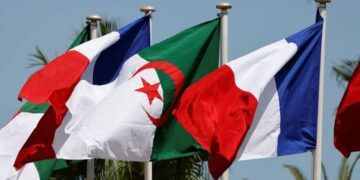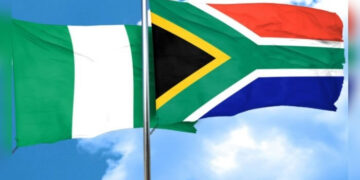By Olusegun Adeniyi
Former Governor of Cross River State, Mr Donald Duke, has a great deal of archival materials and enjoys discussing historical issues. Last week, he sent me a treasured publication that speaks to our country’s past and may help explain some of the challenges we grapple with today. ‘The Nigeria Handbook 1919 (Issued with the approval of the Nigerian Government)’. Compiled by A.C. Burns of the Central Secretary’s Office, Lagos, the publication contains ‘Statistical and General Information respecting the Colony and Protectorate’ in the years preceding 1919. It was printed by the Government Printer in Lagos. “Please read page 128 to 134 on education and health but generally, an interesting read,” Duke had written in the message he sent me.
The moment I received the 304-page handbook, I knew straightaway that I would go beyond the area highlighted by Duke. And having read the entire publication, I am aware that there are aspects that could exhume ancient prejudices and animosities. But that is not my interest. I am more concerned by what we can learn about Nigeria of the past. Without history, according to the opening statement of the University of California Los Angeles (UCLA) Social Science website, “a society shares no common memory of where it has been, what its core values are, or what decisions of the past account for present circumstances.” And without such historical knowledge and inquiry, “we cannot achieve the informed, discriminating citizenship essential to effective participation in the democratic processes of governance.”
Divided into 21 chapters with nine appendices and 11 supplementary documents, the conclusion I drew after completing the publication is that for the British to extract maximum benefit from their colonial exploitation, they adopted a divide and conquer approach between Northern and Southern Nigeria. Since no conscious efforts at nation building were made by post-colonial leaders in the country, it is also no surprise that we continue to be dogged by mutual ethno-religious suspicions that hinder the peace and progress of Nigeria. But I should not get ahead of myself. My first curiosity was the identity of A.C. Burns, listed as the compiler. My online search yielded this: “Sir Alan Cuthbert Maxwell Burns (9 November 1887 – 29 September 1980) was a British civil servant who rose through the ranks to become governor of several colonies… He served in the Leeward Islands from 1905 to 1912 and then became Supervisor of Customs in Nigeria. In 1914, he enlisted in the West Africa Frontier Force. He served in the Cameroons Campaign and became Adjutant of the Nigeria Land Contingent. Burns was Private Secretary to Sir Frederick (later Lord) Lugard and then Huge Clifford during their times as governors of Nigeria.”
The handbook opens in Chapter One with the ‘Geographical and Historical’. The first paragraph characterizing our country jolted me from the start: “The Colony and Protectorate of Nigeria is the largest of the British West African possessions, its approximate area being 335,700 square miles, or nearly three times that of the United Kingdom.” As Duke remarked in a follow-up message, “We were just a business entity to the British.” That’s generous. At least business entities have legal standing. Nigeria was just their possession!
The handbook had this to say on the country’s history prior to colonialism: “The history of Nigeria as a whole, prior to the advent of the British, has not been written, and it is sufficient here to observe that there existed several powerful kingdoms in the north, which, owing to the Mohammedan influences, had attained to a certain degree of civilization, while in the south, few of even such kingdoms as existed had advanced much beyond a primitive barbarism.” From here, the handbook provides interesting insights about the history of Lagos, as well as that of The Protectorate of Rivers, the Niger Coast and Benin, the formation of the Nigerian Regimen for the First World War, completion of the railway etc.
Let’s take the account of events preceding the amalgamation of Northern and Southern Nigeria which occurred five years before the publication: “While the southern portion of Nigeria was being brought under the control of the British Government, the country to the north was being developed by the Royal Niger Company which had been granted its charter in 1886. Treaties were made with the native chiefs, and trading and administrative stations established. In 1897, Nupe and Ilorin were subdued, and the same year the legal status of slavery was declared abolished throughout the territories of the company. A conflict between the British and French troops seemed imminent, but an arrangement was at last come to and the boundary settled. On 1st January 1900, the transfer of the Niger Company territory to the Crown took place; these territories becoming the Protectorate of Northern Nigeria, with Colonel Lugard as the first High Commissioner. The Emirates of Kontagora, Yola, Bauchi, Borno, Kano and Sokoto were subdued in turn, and a rising at Satiru in 1906 was suppressed. Numerous minor expeditions against truculent pagan tribes were also undertaken.”
The narrative in Chapter Three, ‘Population, Religion and Languages’, is enough to ignite another firestorm between the internet warriors of Yoruba and Igbo, “the two chief tribes in the Colony and Southern Provinces.” Since it is not my intention to stir inter-ethnic Wahala, I leave others to do that when they read the handbook. Meanwhile, the total population of Nigeria in 1919 was put at 16,393,000 with 166,000 within the colony (Lagos), 7,690,000 in Southern Provinces and 8,537,000 in Northern Provinces. Incidentally, the population of the United Kingdom that same year (1919) was 19,559,000. This means their population at the time exceeded that of Nigeria by more than 20 percent! We have since reversed those statistics. While the estimated population of UK today is 67,691,439, that of Nigeria is 229,152,217—more than tripled theirs despite the wide disparity in our economic conditions. I know some would rather live in denial about our largely unproductive population but it’s a reality we must, at some point, come to terms with.
In Chapter Four, ‘Constitution’, there is a piece of information that I found quite surprising. After highlighting the process that led to the 1914 amalgamation of Northern and Southern Nigeria, the handbook then states, “The present headquarters and place of residence of the (Colonial) Governor is Lagos, which is also the headquarters of the Colony and of the Southern Provinces. The headquarters of the Northern Provinces is Kaduna which has also been selected as the future Capital of Nigeria.”
This is the first literature to reveal that Kaduna was ever pencilled down by the British as a future capital city for the country. I have also further researched this and cannot find such information anywhere. Yet, this is authoritative despite the disclaimer in one of the opening pages: “This Handbook is not an official publication but is issued with the approval of the Nigerian Government.” Compiled by Lugard’s private secretary and printed by the Government Printer (and with approval), I wonder what could be more official. It is of course no surprise that the economy was designed for the benefit of the British to the detriment of Nigeria. Sample: “There have been five meetings of the Nigerian Council, in December 1914,1915,1916,1917 and 1918 respectively. At the second meeting, a resolution was passed pledging the Government of Nigeria to take over, after the war, six million pounds of the Imperial War Loan, which would be added to the public debt of Nigeria.”
By most historical accounts, the colonial administration faced fewer challenges in the North because of the well-established traditional ruler system. They were less successful in the southern part of the country which is evident in the handbook. “In some parts of Nigeria where native chiefs have shown a capacity to rule, and especially in the Northern Provinces, the Government exercises only an indirect control, the Resident assuming the role of an adviser. In other parts, however, where there is no strong native authority capable of governing, the rule of the political officers is a more direct one, but even in such districts a native judiciary with powers limited in proportions to its ability and integrity is made use of with results that are increasingly satisfactory.”
Chapter Five details ‘Trade and Customs’ and provides a comprehensive picture of the economy of the country at the time. “The trade of Nigeria in 1918 was nearly five times as great as it was in 1900 and it is still increasing. As the country is opened up and the means of transport improve, the raw material which is now inaccessible will be exported still in large quantities, the wealth and standard of living of the people will improve, and a larger amount of imports will be required to meet the increased demand…” Figures were provided in this highly revealing section that speaks to a relatively strong economy and balanced budgets at the time. In 1900, for instance, the amount for total imports was £1,735,244 while that for total exports was £1,886,883 with total trade amounting to £3,622,127. In 1913, total imports raked in £6,331751 while £7,097646 was realized for total exports. The amount for total trade was £13,429397. In 2018, £7,423158 was realized from total imports with £9,511970 made from total exports. That year, £16,935,128 was made from total trade.
Nigerians have long lamented how Malaysia grew its wealth on the strength of palm seedlings from Nigeria. Details from the handbook say a lot: “The most important of these exports are palm oil and palm kernels which in 1918 were valued at £5,937526 which is over 63% of the total value of all produce exported during the year.” So, almost two-thirds of Nigeria’s export proceeds in 1918 came from palm oil and palm kernels. Today, we import these same commodities. Chapter Six, on banking, currency, weights and measures, is also very detailed. But readers can take this: “The natives are very suspicious of and are unwilling to be paid in coins of Queen Victoria’s reign and half-crowns of any date. Native currency in the forms of cowries, manillas, and brass rods is still used in some parts, but further importation is prohibited, and the abolition of such native currency is being gradually effected. Barter still prevails in the more backward districts.”
Readers will enjoy the chapters on ‘Climate and Rainfall’, ‘Shipping, Ports, and Internal Communications’ and ‘Law, Courts, Criminal Statistics, Police and Prisons’. But Chapter Eight, ‘Mines, Manufactures and Fisheries’, is another reminder of squandered riches. “The mineral wealth of the Northern Provinces of Nigeria is now an accepted fact, and tin mining industry has become of great importance. There is evidence that the existence of tin on the Bauchi plateau was known to the natives long before the advent of the British and they had smelted it on a small scale for many years. As long as 1885, this was known to the Europeans, but owing to the unsettled condition of the country no attempt at prospecting could be made,” it was written in the handbook. “Further inland than the swamp forests lie evergreen tropical forests which contain the most valuable of the economic trees of Nigeria. Owing to the wasteful native system of farming and the extensive migrations of tribes in earlier times, the bulk of the vegetation consists of secondary growth which has sprung up rapidly in deserted clearings. Mainly for this reason, the number of different species growing together is very large.”
Chapter 11 deals with ‘Government Finances’ and the handbook provides details: “The total revenue of Nigeria (i.e. Lagos, Southern Nigeria and Northern Nigeria) for the financial year 1900-1901 amounted over £683,000, while the revenue for 1913 (the last year unaffected by war condition) was over £3,462,000, or more than five times as much, and there is no doubt that but for the war the year 1914 would have shown a further remarkable increase. The revenue for the years 1917 and 1918 have beaten all previous records.”
The breakdown for seven years follows the narrative. 1912: Revenue, £2,806,905; Expenditure, £2,768,539. 1913: Revenue, £3,462,507; Expenditure, £2,916,801. 1914: Revenue, £3,048,381; Expenditure, £3,596,764. 1915: Revenue, £2,703,257; Expenditure, £3,484,215. 1916: Revenue, £2,943,184; Expenditure, £3,609,638. 1917: Revenue, £3,492,738; Expenditure, £3,219,958. 1918: Revenue, £4,014,190; Expenditure, £3,459,774. There was this note: “Prior to the amalgamation an annual refund (£70,000 in 1911) was made by Southern Nigeria to Northern Nigeria on account of Customs Duties collected at the coast on goods in transit to the latter Protectorate. Northern Nigeria also received an annual Imperial Grant-in-Aid which in 1911 amounted to £317,000. This Grant-in-Aid was afterwards reduced to £100,000 and has now ceased.”
As an aside, nothing confirms the adage about the tale of the hunt glorifying the hunter than the 1919 Handbook account of the ill-motivated and patently provocative 1897 Benin expedition by a British trade officer which ended tragically. In the late 19th century, as I wrote in a June 2021 column, what is now the Edo state capital had a strong kingdom that survived the British expedition and the 1885 Berlin Conference where Africa was partitioned and shared among European powers at the time. In the last decade of that century, James Phillips, the British Consul General for Niger Coast Protectorate (the present-day South-South zone) found the Benin Kingdom too independent and sought to neutralise the powers of the Oba on the pretext that the palace was engaged in human sacrifices. He therefore requested permission from London to invade the city, depose the Oba and replace him with a Native Council. “I have reason to hope that sufficient ivory would be found in the King’s house to pay the expenses incurred in removing the King from his stool,” Phillips wrote in his December 1896 letter to Lord Salisbury, then Foreign Secretary.
Without waiting for a response from London, Phillips sent a request to the Benin palace to expect a delegation from him. Despite the plea from the Oba of Benin that he could not at the period receive visitors, Philips nonetheless sent a military contingent on a supposedly peaceful mission, and they were confronted by Benin chiefs. In the aftermath, only two members of the contingent survived to tell the tale of what became known in British history as the ‘Benin Massacre’. In retaliation, Rear-Admiral Harry Rawson, a Naval commander was appointed to lead as many as 1,200 Royal Marines for the 9th February 1897 invasion of Benin, capture the Oba and destroy the city, in an operation codenamed ‘The Benin Punitive Expedition.’ Never mind that the whole exercise became a looting expedition by the British.
It took just weeks after that invasion for the looted Benin artifacts to find their way to museums and private collections around the world, either as gifts or through purchases. The first public auction reportedly took place in May 1897, following advertisement in the ‘Times’ newspaper for the sale of “several carved tusks and other trophies from Benin city collected by naval officers in the recent expedition”. Meanwhile, here is the terse narrative of that episode in the 1919 Nigeria Handbook: “In 1897, a peaceful mission to Benin was treacherously attacked and all but two of the European members were massacred. A powerful expedition captured the city and the king surrendered and was deported.” Now we know how it took a certain Mr Mungo Park to ‘discover’ River Niger for our people!
Several pages in the handbook were devoted to advertisements by British companies, including the Bank of British West Africa Limited (Established 1894). Listed as ‘Bankers to the Governments of the Colonies of the Gambia, Sierra Leone, the Gold Coast and Nigeria,’ with head office in London, the advert highlighted its Authorised Capital as £2,000,000; Subscribed Capital, £1,450,000 and Called-up capital, £580,000. There was also an advert by The Colonial Bank. Subscribed Capital was put at £3,000,000, Paid Up Capital, £900,000 and Reserve Fund, £350,000. In the adverts, I found a few Nigerian companies. One, L.A Cardoso engaged in import and export with, among other things, ‘600 Acre Farm in Agege District’. I don’t know if it belongs to the family of the current CBN Governor whose father, Felix Bankole Cardoso, was the first indigenous accountant general of the federation in 1963. Or even whether the company still exists. There is also ‘Dada Adeshigbin and Sons’ who were said to be the ‘Sole Importer of Singer Sewing Machines’.
I have done some rudimentary online searches on the man. In one posting Dada Adeshigbin was described as “a 19th Century townsman and one of the principal founders of the African Bethel Church” who was born in 1865 and died in February 1925 at age 60. There are postings by journals of universities in the United States and United Kingdom that speak to Adeshigbin’s business acumen but details about him can be found in the book, ‘The African Churches in Yorubaland (1888—1922)’ by James Bertin Webster. The interesting thing for me is that Adeshigbin is a name I am hearing for the first time, yet we are talking about a prominent man in the late 19th and early 20th century Nigeria. Why is it that the wealth our people produce does not last for generations? I intend to interrogate this issue one day.
While I intend to continue, and possibly conclude the series next week, it was Chapter 14 on ‘Education’ that Duke drew my attention to, perhaps because of the opening statement: “Education in Nigeria is not compulsory, and indeed until comparatively recently, was left entirely in the hands of missionaries, the first government school being founded so late as 1899. In the Colony and Southern Provinces, there were, at the end of 1918, 41 Government Schools, 189 ‘Assisted’ private schools, and a large number (probably more than 1400) of unassisted schools.” Duke also wants me to read Chapter 15 on ‘Public Health, Sanitation, Hospitals etc.’ I hope this wasn’t what fired his interest: “Syphilis and gonorrhoea are common diseases all over the country.”
NOTE: To be concluded next week.
• You can follow me on my X (formerly Twitter) • You can follow me on my Twitter handle, @Olusegunverdict and on www.olusegunadeniyi.com



































